I’m done with LinkedIn lunatics
I can’t scroll on LinkedIn anymore. My feed is so flooded with low-value content that I spend most of my time clicking the “not interested” button, and it never seems to make things any better.
It’s a constant stream of self-bragging freelancers, AI-generated posts with emoji bullet points 🤪, and interns writing epic farewells to their 6-month interships like they’ve just returned from war. You have hustle-porn gurus selling “secret techniques”, only if you comment ‘SECRET’ in the comments and everyone turning the most normal (and sometimes intimate) parts of their lives into a profound TED Talk.
But the absolute peak of cringe is the fake stories. The ones that are so suspiciously cinematic they can’t possibly be real. Some people even claim they have a one-to-one meeting with Sam Altman (they are thousands claiming that, idk if Sam has only this to do in his schedule). You have to wonder, is lying for a few hundred reactions that won’t even get you a job really worth it? (And we’ll prove why it isn’t later in this post). This trend has become so famous, that it made this legendary meme come to life:
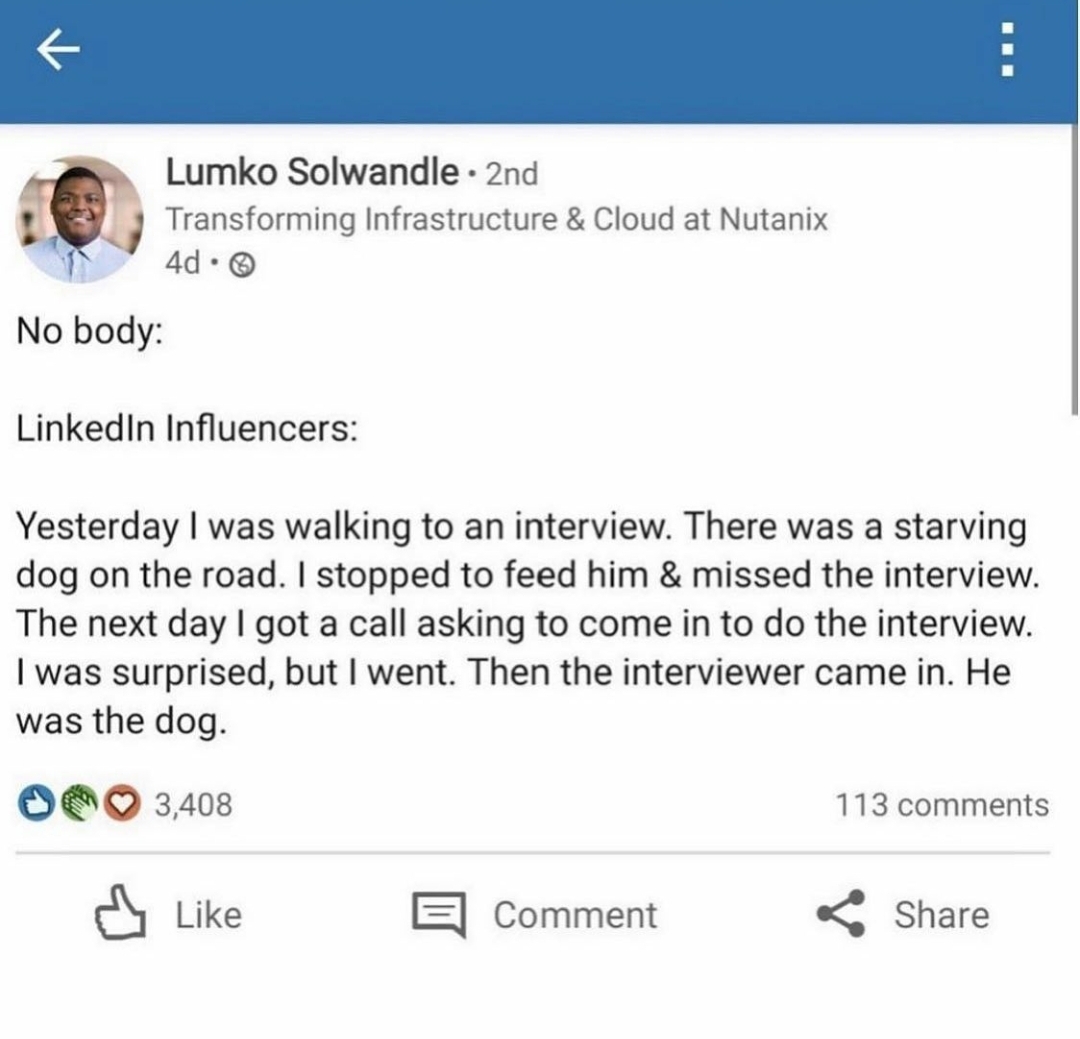
This isn’t a new side effect of LLMs. LinkedIn has always been cringe, and the wonderful r/LinkedInLunatics subreddit is a museum proving that. You can see there that most of posts are written in “broetry”: a writing style with zero original thought, designed to create the illusion of value. Here’s a perfect example of how a raw, human moment gets twisted into generic, algorithm-friendly nonsense:
(Note: This is a reformulated, AI-style version of a real post to show how genuine vulnerability becomes “broetry.”)
I finally admitted it to my boss: “I’m not good enough.”
We were in Sydney.
After a day of back-to-back meetings.
I was burned out.
I told him I felt like a fraud.
He just stared at me.
And asked a question that changed everything:
“Where’s the data that says you’re failing?”
I had no answer.
Only feelings.
He stopped me.
And said: “Feelings aren’t facts.”
And it hit me.
The biggest obstacle in my career wasn’t the meetings.
It was the story I was telling myself.
Your mindset is your most important KPI.
#Leadership #Mindset #ImposterSyndrome #CareerGrowth #Vulnerability
This lunatic behavior isn’t an accident. The cringe is baked deep into the platform’s DNA (like we will see later).
In this investigation, we will dive deep into what LinkedIn is all about. How did it start, how does it make money, and who is really benefiting from it? Most importantly, we’ll explore why its algorithm seems to reward lazy and cringe-worthy content. This is all backed by resources, arguments, and proof.
And it’s all written by hand, by me, because I respect my readers and want to provide real value. There’s nothing to sell and nothing to win, just a genuine connection and a story that needs to be told.
What is LinkedIn anyway?
LinkedIn is a monster of a business. It’s the world’s largest professional network, boasting over 1.15 billion users. While it’s not touching the numbers of Facebook (3.065 billion) or TikTok (1.7 billion), in the world of suits and ties, it’s the undisputed king.
And this success isn’t an accident. The base idea was fundamentally good, laughably simple: create a social network just for professionals. It was meant to fill a market gap because your boss doesn’t need to see your vacation photos on Instagram (sadly some people are posting vacation photos on LinkedIn). It was about advancing careers, sharing knowledge, and actually creating opportunities. It was so good, in fact, that Microsoft dropped $26 billion on it in 2016.
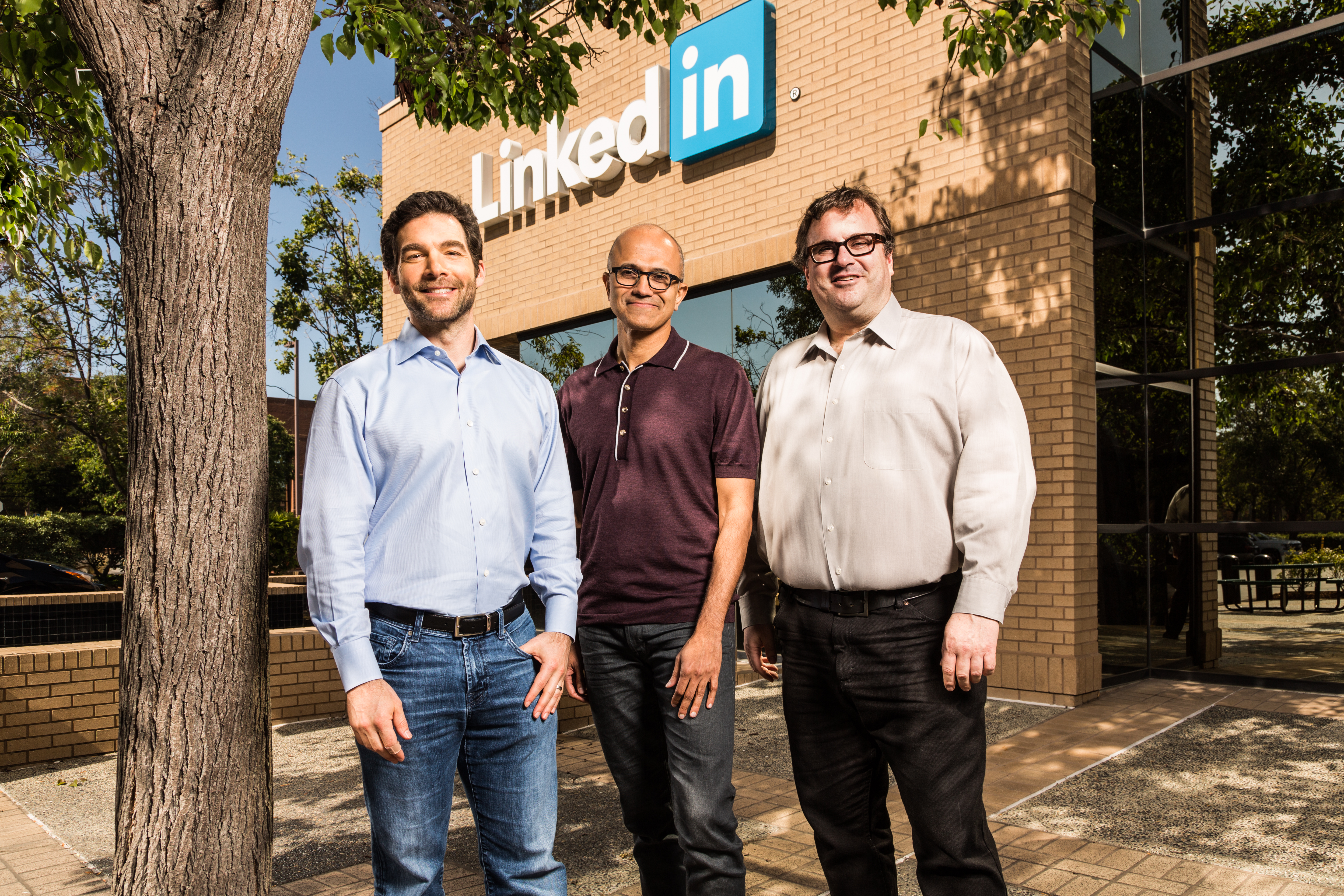
But a billion users and a massive price tag mean someone has to pay the bills. So how does LinkedIn actually make its money?
The main cash cow is Talent Solutions. This is where they milk recruiters and companies, charging them a fortune for premium tools to find and hire people. The feed could be a cringe dumpster, but as long as recruiters are paying, the machine keeps running. Then you’ve got Marketing Solutions, where advertisers pay to get their sponsored posts into your already cluttered feed. And there are the Premium Subscriptions, for individual users who pay to see who stalked their profile or to send a (maybe desperate ?) InMail to a hiring manager. They also have LinkedIn Learning, a subscription service that used to be Lynda.com.
Okay, so the company is making a killing. But who is this all really for?
- For the average professional, the value is clear. It’s a free, accessible place to build a personal brand, network with peers, and maybe, just maybe, find a better job. It’s also your digital resume on display for the world.
- For recruiters, it’s an indispensable goldmine. They can filter through millions of candidates by skill, location, and experience, making it the ultimate talent sourcing machine.
- And for marketers, it’s a direct pipeline to the people who make decisions. They can bypass the usual gatekeepers and slide right into the DMs of a CEO.
So, the platform clearly has its uses. But before it became like this, it at least felt more straightforward. It makes you wonder. Before the AI army arrived to write everyone’s posts, how the hell did anyone actually get noticed? Was it just about having a polished profile, a lot of posts, or was it something else ?
How people used LinkedIn before LLMs
It turns out, LinkedIn didn’t create great networkers. The great networkers just decided to use LinkedIn. This is what researchers call the “selection effect.” The real networking pros, the people who were already crushing it offline, just brought their game online.
And they were strategic about it. It was never about your work bestie or your internal company chatter. It was all about external networking, connecting with people outside their organization. These skilled networkers used LinkedIn as a tool, not a diary. They would passively scroll to build “ambient awareness,” basically a mental map of who was doing what in the industry. They’d post actively, but with purpose, to stay on the radar. And they would collect “latent ties,” adding connections they didn’t know well, just in case they became useful later.
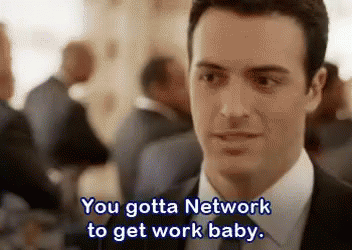
And here’s the most brutal truth of all: their success didn’t even come from the platform. Research shows that good networkers get benefits because they are good at networking, period. LinkedIn was just the digital Rolodex they used to manage their contacts. Their real work was still done at conferences, over coffee, or in backroom deals.
But there was a silver lining here for the rest of us. Even if you weren’t a master networker, just having a large number of “weak ties” (think old colleagues and acquaintances) was enough to bring you new information and opportunities. It was proof that sometimes, it’s not who you know well, but how many people you know a little.
So, back in the day, LinkedIn was a tool. Now, it feels more like a stage for a very, very weird play.
Why is LinkedIn so cringe?
Why is this platform so fundamentally weird? Why does it feel like a high school reunion where everyone is lying about their job, but you’re forced to stay and clap politely? The answer is that the cringe isn’t a bug; it’s a feature. It’s baked into the very core of what LinkedIn is.
The platform has a massive identity crisis. It’s trying to be a professional resume and a social network at the same time, forcing a collision between your polished corporate identity and your human one. This creates what sociologists call “context collapse.” On any other platform, you know your audience. On LinkedIn, your boss, your ex-boss, your intern, your clients, and your weird cousin from high school are all in the same room, watching you. This creates a self presentation nightmare. You have no idea which version of yourself to be, so you end up performing a bland, high stakes, people pleasing version that impresses no one. It’s a state of constant surveillance where there is no “dancing like no one’s watching.” It’s a factory for forced positivity and what can only be called “industrialized authenticity.”
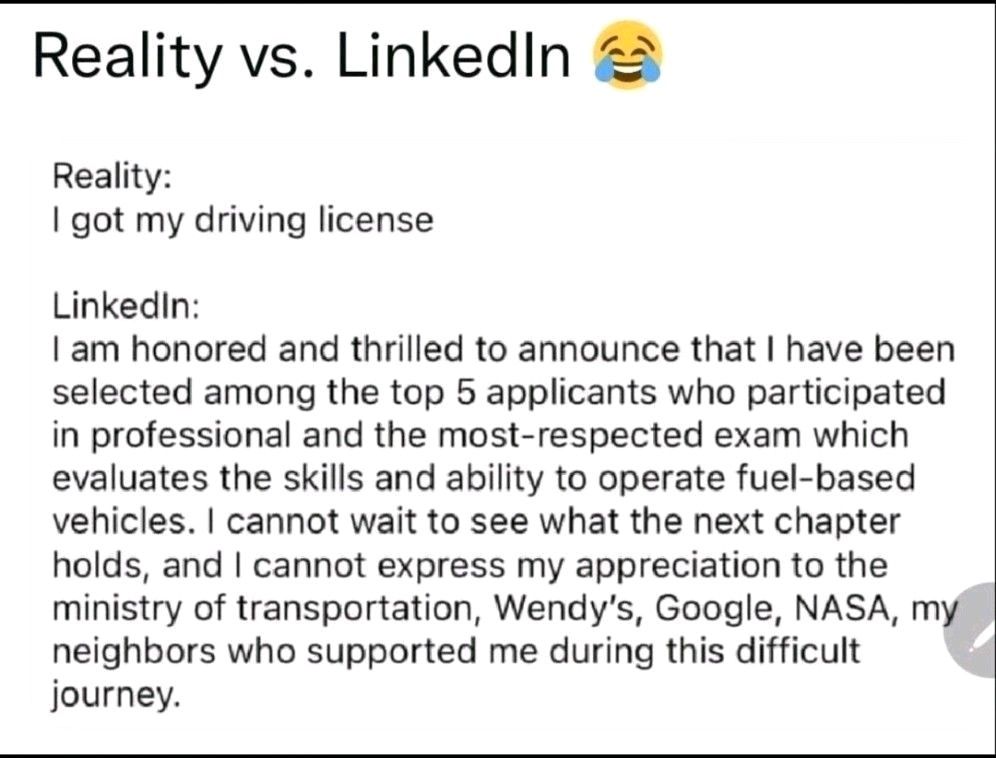
And this environment is the perfect breeding ground for the crown jewel of LinkedIn cringe: the humblebrag.
The humblebrag is the art of bragging (or flexing) while pretending to complain or be modest. Think: “Graduating from 2 universities means you get double the calls asking for money. So pushy and annoying!” Most people think (including myself 1 month ago) this is a genius move, a way to show off without looking like a jerk.
Newsflash: the research is in, and it’s a terrible strategy. People can smell the bullshit from a mile away. The reason it fails so spectacularly is insincerity. It’s a transparent attempt to manage an impression, and observers hate it. In fact, studies show people dislike humblebraggers more than people who just brag outright. At least a bragger is honest about being an asshole. The humblebrag is so ineffective that it even backfires on the very thing you’re trying to promote. Someone humblebragging about being attractive is seen as less attractive than someone who just says it. This is not just an online phenomenon, either. When asked in job interviews for their biggest weakness, a whopping 77% of people give a humblebrag like “I’m a perfectionist” or “I just care too much.” Recruiters, for the record, would rather hire the person who admits they’re bad at public speaking.
Once you understand the psychology, you start to see the different genres of cringe that have taken over the platform. It’s a whole ecosystem of bad content.
You have the “broetry,” a style specifically designed to hack the algorithm with short, dramatic, single line paragraphs and a clickbait first sentence. Then there’s the entire Humblebrag Industrial Complex, with its own subgenres of ritualized performance:
- Success as Modesty: “I’m humbled to announce…” We get it, you’re not humble.
- Virtue Signaling: “A stranger did something kind and restored my faith in humanity…” A story that is almost certainly made up.
- Destiny as Disappointment: “I was rejected from my dream job, and it was the best thing that ever happened to me…” Sure it was, buddy.
This is the world of faux gurus, crying CEOs, and people who copy-paste inspirational quotes from actual leaders without taking any of the risk.
So why does this garbage not only exist but thrive? Because the system is rigged. LinkedIn’s business model is basically cringe-proof: the vast majority of its money doesn’t come from ads in your feed; it comes from selling “Talent Solutions” to recruiters. I think that the feed could be a biblical flood of bad posts, and as long as HR departments are paying to find candidates, the train keeps going along. The “royalty” of LinkedIn are the recruiters, and everyone else is just performing for them.
And just when you thought it couldn’t get any worse, in comes the AI. More than half of all long form posts on LinkedIn are now AI generated. But AI didn’t invent the cringe; it just mastered it. These tools are trained on the high-performing posts of the past. They know the exact rhythm of the humblebrag, the perfect vulnerability to insight ratio. They have perfected the formula for inauthenticity.
I claim that all this weirdness, is being actively encouraged, measured, and rewarded by: the LinkedIn algorithm.
The code behind the cringe: how the algorithm works
So how does this machine decide which garbage to feed you? It’s not random. It’s a calculated, multi stage gauntlet designed to filter, test, and distribute content. And once you understand it, you’ll see exactly why the feed is such a dumpster fire.
It starts the second you hit “post.”
First comes the Initial Filter. The algorithm categorizes your content (text, image, video, whatever) and does a quick quality check. If your post looks like spam, it’s dead on arrival. If it passes this basic test, it gets shown to a small, initial test audience, mostly a slice of your direct connections.
This is where the audition begins. It’s the so called “Golden Hour,” the first 60 to 120 minutes where the algorithm watches like a hawk. It’s not just looking for likes; it’s measuring everything. How fast do people engage? How long do they stare at your post before scrolling away (the all important “dwell time”)? And most importantly, what kind of engagement is it? Here’s the secret: comments are king. Meaningful comments are valued more than a simple like. And if you can get a real back and forth going, a discussion in the comments, your reach can explode by more than double. This is why you see so many posts ending with a dumb, engagement bait question. They’re playing the game.
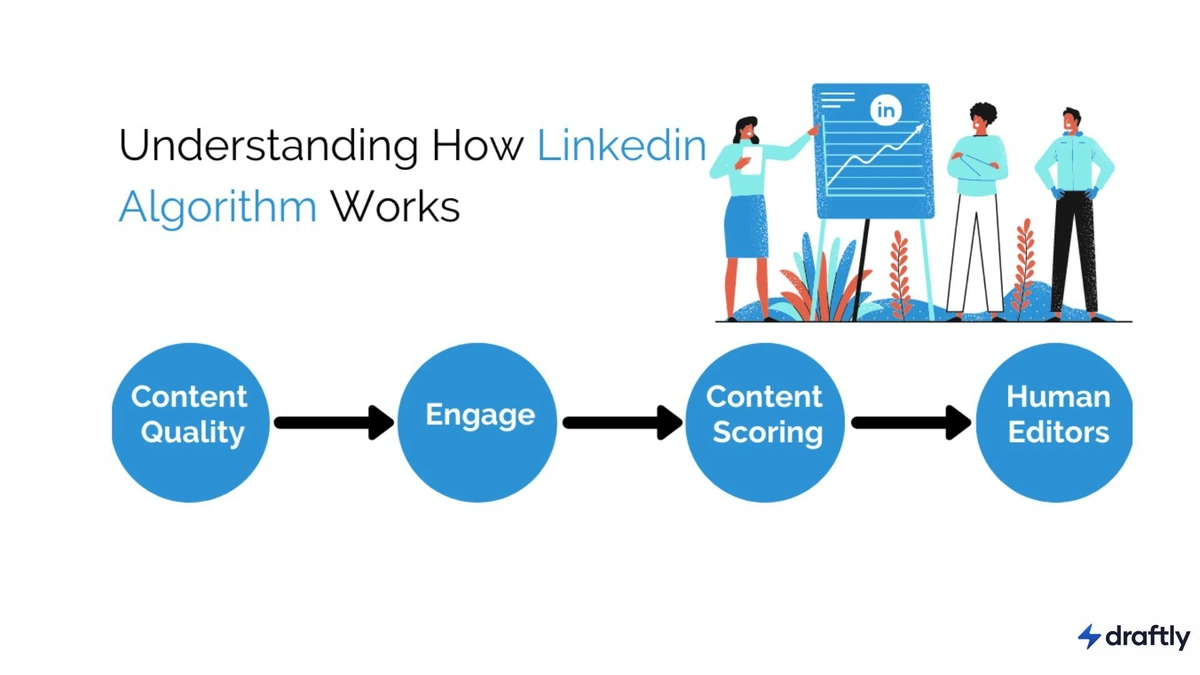
If your post performs well in the audition, it gets promoted to the big stage: Wider Distribution. The algorithm starts pushing it out to your 2nd and 3rd degree connections, and to anyone who’s shown interest in similar topics. This is how a post “goes viral” on LinkedIn.
With the new “Suggested Posts” feature, the algorithm can resurrect high performing cringe from weeks, months, or even years ago and shove it back into people’s feeds. Valuable content now has a longer lifespan, which sounds good until you realize that “valuable” is decided by the metrics we just talked about.
Now, LinkedIn will tell you they’re trying to make things better. Recent updates are all about “Relevancy Over Recency,” prioritizing what the algorithm thinks you want to see over what’s new. They claim they’re focusing on “knowledge and advice.” But the result for most people has been a drop in overall reach. The machine is showing posts to a smaller, more targeted audience. And it’s de-emphasizing things like hashtags, which are now practically useless for getting algorithmic reach.
So what does this all mean in practice? It means the algorithm rewards specific, hackable behaviors. Polls and carousels (documents) do well because they keep people on the post longer, boosting dwell time. Posts written at a 4th grade reading level with short paragraphs and tons of white space get more reach. This is the exact formula that gave birth to “broetry” and the endless stream of single line paragraphs you see today. It’s not a creative choice; it’s a calculated move to please the machine. And the biggest myth breakers? Putting an external link in your post will absolutely kill your reach, by up to 40%. The platform wants to keep you trapped inside its walls.
So, with this entire system built to reward engagement bait and long winded stories, does actively participating in this circus actually get you a job?
Well, here’s the paradox. The things that really matter for recruitment are often passive. Having a profile loaded with recommendations is the single biggest factor. It can get you 14 times more profile views. 79% of recruiters say recommendations are a significant factor, and they trust them more than traditional references. This is the real social proof that you’re not a complete lunatic.
But what about posting? The correlation is indirect. No single cringe post is going to land you a job. But building a “brand” over time by consistently showing up in your network’s feed creates what marketers call “brand relevant memories.” You become the person they think of when an opportunity comes up. Recruiters use the platform to build their own brands too, not just by posting jobs but by sharing “valuable” tips to seem more approachable. And for companies, the ultimate hack is employee advocacy. A post from an employee gets twice the engagement and reaches a network 10 times larger than the company page.
So while the algorithm rewards one kind of behavior, the actual business of getting hired relies on another. It’s a broken, contradictory system.
So, what’s the point?
After all of that, after dissecting the business model, the psychology, and the algorithm, what’s the takeaway? Quit LinkedIn? Burn it all down and go live in the woods?
No. That’s the easy way out.
I think we should embrace it. I think we should dive headfirst into this sea of cringe and be the signal in the noise. This is a call to reclaim the space, on our own terms.
This means being yourself, unapologetically. It means avoiding AI, writing your own thoughts, and building a brand that is actually yours. You don’t have to have an opinion on the future of FinTech every Tuesday. You don’t have to agree with every influencer or disagree with every trend just to get a comment. After five years and 14k followers on this platform, I can tell you that while it’s mostly bullshit, there are still gems. There are still people writing things that matter, that genuinely help, that shine.
Here is the only hack you need. Before you hit post, just take a breath. Read what you wrote out loud. See yourself as the reader. Does it make you cringe? If it does, delete it and ask yourself what the hell you’re doing.
But if you read it and feel a sense of pride… if you think, “this might actually help someone,” then you’re one of the good ones. Post it. And don’t worry about the reach. It’s okay if you don’t go viral. The algorithm wasn’t built for you anyway; it was built to reward the low quality marketing circus. Don’t get lured by the numbers on their shitty posts. At the end of the day, they’re just playing a marketing game, and you don’t have to play it with them.
So try it, just once. Write something by hand. Write from your mind, from your gut, from your heart. Because that’s how you actually reach people. Stop outsourcing your voice to a machine, hoping it will connect with a person. Real connection is, and always will be, people-to-people.
Writing is a form of telepathy that AI can’t replicate.
And please, for the love of God, stop using emojis as bullet points. It’s so cringe.